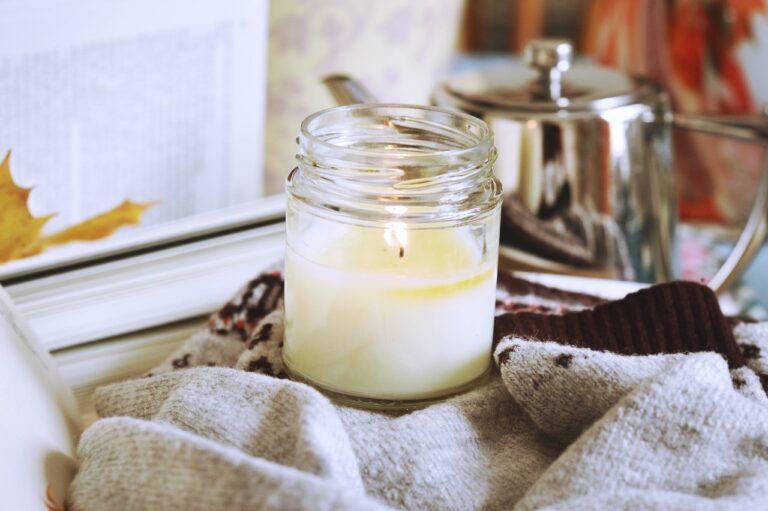When I first started candle-making two years ago, I thought it sounded easy. Just melt some wax down, add some fragrance oil and let it set, right? I was very wrong! After many months of failed attempts and endless testing, I realised that making a candle that burns well, smells good and is safe to use is a lot harder than it looks!
Candle-making is all about the details. Choosing a wick on its own is hard work, as a wick that’s too big will produce lots of soot and burn too hot, while a wick that’s too small will tunnel down the middle and drown itself. The only way to find the right size is through trial and error.
Furthermore, the temperature at which you add fragrance and pour the wax can make a huge difference! Fragrance oils also react to wax differently, so even when you’ve found a formula that works, it’s necessary to test new fragrances every time.
Candle-making takes a lot of skill and experience to master, but I also love it for those very reasons. It’s a beautiful art form that has been around for centuries. I like to call it ‘wax alchemy’ as it’s essentially a process of combining raw materials and creating something new from it.
Ancient Romans first made candles around 500 BC. They were tallow candles, made from fat derived from animals. They were primarily used as a source of light and warmth, though oil burners were more common as they were cheaper.
Candles, especially beeswax candles, were considered luxury items that were given as gifts or used during religious ceremonies. By the 13th century, candle-making had become a guild craft in England and France.
Here are a few fun facts about candle history you may not have known:
- In the 18th and 19th centuries, candles were made from
spermacetti , a waxy substance produced by the sperm whale. - The Song Dynasty in Ancient China used ‘candle clocks’ to tell the time; the candles would
have time marking inscribed into the wax. - The manufacture of candles became an
industrialised mass market in the mid 19thcentury, when it wasmechanised and paraffin wax was adopted for large-scale use. - Paraffin wax, which is a by-product of petroleum, is still the most widely used wax today.
While most famous candle brands you see in shops likely use paraffin wax, natural waxes such as soy, coconut, and rapeseed waxes are becoming increasingly popular.
Here at Chai Lights we only use 100% soy wax, a plant-based renewable wax that has a longer, cleaner burn than paraffin. This means less sooting and better burn time for your money! Have a look now at the full collection.



